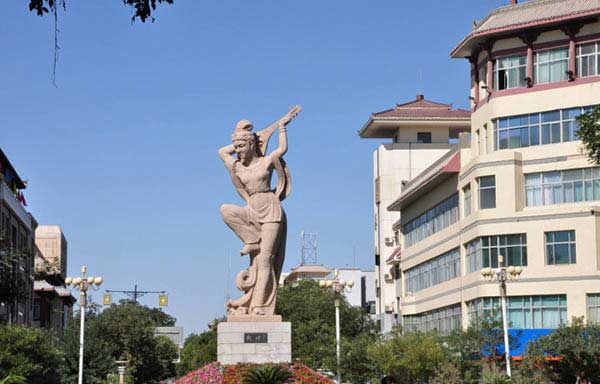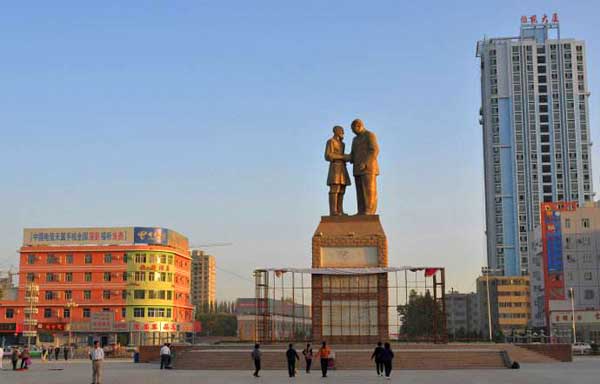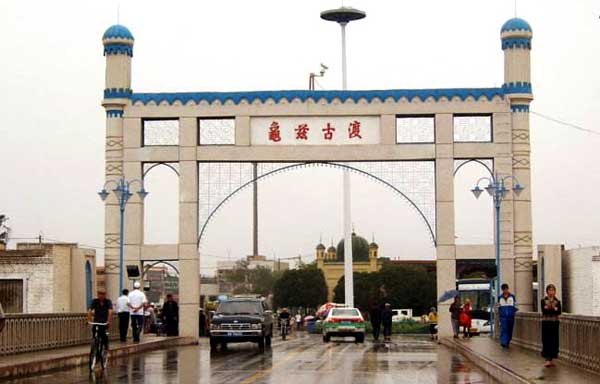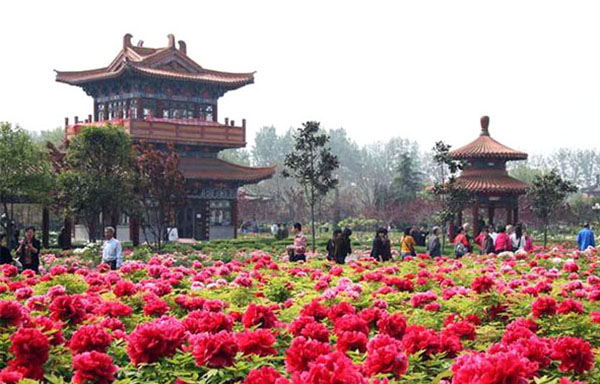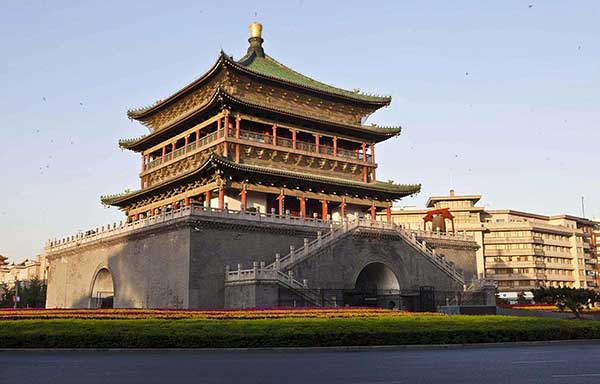- By admin
- In SilkRoadKnowledge
- 2025-03-04
What is the connection between "dragons" and "snakes" in the murals of the Dunhuang Grottoes?
In traditional Chinese culture, the snake has a dual identity of auspiciousness and danger. Ancient people believed that the snake not only possesses divine characteristics but is also an element that constitutes the dragon, carrying rich cultural connotations and auspicious meanings, symbolizing beauty, passion, loyalty, and flexibility. The Mogao Grottoes preserve many images of snakes, which are diverse and in various postures.
What wishes do the shapes and patterns of snakes in the Mogao Grottoes convey? Why do some "dragons" in the Dunhuang murals appear in the form of "snakes", and what is the connection between the two? How do the East and the West understand snakes differently? Zhang Xiaogang, vice president and research curator of the Dunhuang Academy, recently gave an exclusive interview to China News Service's "East-West Dialogue" to explain these questions.
Xinhua News Agency reporter: What are the main forms and patterns of snake images in the Dunhuang Grottoes, and what do they symbolize?
Zhang Xiaogang: The snake-related content in the Dunhuang Grottoes is rich and diverse in form. Some are depicted on the chests of Bodhisattvas, some on the ceilings or central pillars, and some in the narrative paintings. They are an important part of the animal images in the Dunhuang Grottoes. The main types are as follows:
Snakes as decorative patterns. The earliest "snake" images in the Dunhuang Grottoes appeared as decorative patterns. For instance, in the 275th Cave (Northern Liang Dynasty) on the southern lower part of the west wall, the Bodhisattva wears a "pair of snakes" patterned necklace, with simple snake shapes symmetrically placed on the chest of the Bodhisattva. In the 244th Cave (Sui Dynasty) on the north wall, this pair of snake pattern is presented in the form of clay sculpture.
Snakes as auspicious beasts. The reverence of the Chinese people for snakes can be traced back to ancient times. In ancient myths and legends, there are many stories that regard snakes as ancestral deities or worship snake gods. The human-headed snake-bodied images of the human ancestors Fuxi and Nuwa appear in the 285th Cave (Western Wei Dynasty) murals of the Mogao Caves, which is a combination of traditional Chinese mythological thought and Buddhist content.
Ancient people also believed that snakes and turtles were longevity and auspicious beasts, symbolizing good fortune. In traditional Chinese mythology, the combination of a turtle and a snake is the deity Xuanwu. In the Dunhuang Grottoes, snakes are used to represent Xuanwu, one of the Four Divine Beasts, as part of its body, and are endowed with the meaning of longevity and eternal life.
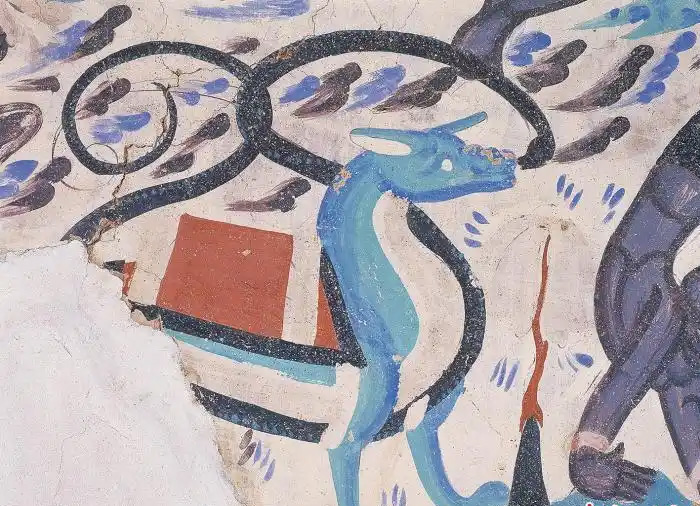 The Xuanwu (玄武) in the eastern slope ceiling of Mogao Cave No. 249
The Xuanwu (玄武) in the eastern slope ceiling of Mogao Cave No. 249
As a fierce animal, snakes have been depicted in numerous idioms and proverbs by ancient people, such as “seeing a snake in a bow’s reflection in a cup” (杯弓蛇影) and “once bitten by a snake, one is afraid of ropes for ten years” (一朝被蛇咬,十年怕井绳). These expressions reflect people’s fear of venomous snakes. In the Dunhuang Grottoes murals, snakes often appear as venomous and fierce animals, reflecting people’s fear and awe of snakes, and also indicating that the power of snakes should not be underestimated.
China News Service Reporter: What is the connection between “dragons” and “snakes” in the murals of the Dunhuang Grottoes?
Zhang Xiaogang: In nature, some snakes use coiling to capture prey, and the larger their body size, the greater their strength. In Dunhuang murals, these “strongman”-like snakes are endowed with the symbolism of guardians and protectors. The “Eight Guardian Deities” (天龙八部) are a typical example.
The Eight Guardian Deities are eight groups of heavenly beings in Buddhism who protect the Dharma and listen to the sutras. They are the leaders of eight groups: “Devas” (天), “Nagas” (龙), “Yakshas” (夜叉), “Gandharvas” (乾达婆), “Kinnaras” (紧那罗), “Asuras” (阿修罗), “Garudas” (迦楼罗), and “Nagarajas” (摩睺罗伽). They are a common subject in Dunhuang murals, usually painted on both sides of the Buddha, and are regarded as representatives of the brave and valiant among all living beings in the universe. They serve the purpose of protecting and safeguarding the grottoes.
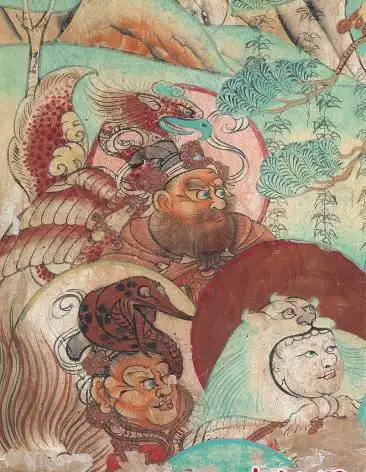 The Eight Guardian Deities in the Maitreya Sutra Transformation on the left side of the north wall of Cave 25 in the Yulin Grottoes. (Photo provided by the Dunhuang Academy)
The Eight Guardian Deities in the Maitreya Sutra Transformation on the left side of the north wall of Cave 25 in the Yulin Grottoes. (Photo provided by the Dunhuang Academy)
In grotto art, ancient painters endowed these deities with human-like features. Among them, “Mahoraga” (摩睺罗伽) is an image associated with snakes, representing a great python deity. The “dragon” in the Eight Guardian Deities is also related to snakes. In India, dragons are called “Naga” (梵文:Naga), which translates to “dragon” in Chinese but actually refers to large pythons. In Indian Buddhist art and the murals of Xinjiang grottoes, the image of the Dragon King often appears as a serpent with a snake head and body or a human face with a snake body.
In some dragon images in the Dunhuang Grottoes, the Indian dragon deity image represented by large pythons was also absorbed. In some human-shaped Dragon King images, several python heads extend from behind their heads, which is a typical feature of Indian Dragon Kings. This indicates that the sculptural art of the Mogao Grottoes was influenced by Indian Buddhist art and also reflects the ancient Chinese folk practice of referring to snakes as “little dragons.” The spiritual and auspicious connotations of snakes convey the ancient people's reverence for deities and ancestors.
China News Service Reporter: With the opening of the Silk Road and the eastward spread of Buddhism, did traditional Chinese snake images borrow and absorb anything? How are Eastern and Western elements reflected in painting and sculptural techniques?
Zhang Xiaogang: The origin of Chinese snake culture is very early, dating back to the Neolithic Age, with snake images found on pottery from the Yangshao Culture. After thousands of years of development, the image and connotations of snakes have penetrated all levels of society. With the opening of the Silk Road and the eastward spread of Buddhism, the snake culture of ancient India was introduced to China via the Silk Road and integrated with the existing Chinese snake culture.
In Indian Buddhist art, snakes are often used to depict Dragon Kings, either in human form or in snake form, with flat bodies, usually resembling king cobras. This image of the dragon directly influenced the sculptural art of the Dunhuang Grottoes. In the Sakyamuni Subduing the Dragon and Entering the Bowl Preaching Figure (释迦降龙入钵说法图) painted on the south side outside the niche on the west wall of Cave 305 (Sui Dynasty), the dragon resembles the popular king cobra in India, which is an absorption of Indian snake culture.
While absorbing foreign cultures, the Mogao Grottoes also recreated the image of snakes. For example, in the Eight Guardian Deities, “Mahoraga” is depicted in Chinese-style armor like a warrior, with the python image representing Indian culture on its head. This is a recreation combined with traditional Chinese culture. Another example is that although snakes appear in the form of Dragon Kings in the Dunhuang Grottoes, they are no longer in the flat-bodied king cobra image popular in India, but in the traditional Chinese snake image, which is plump and colorful.
With the Silk Road and the eastward spread of Buddhism, the Indian image of using snakes to depict Dragon Kings was introduced to China, influencing Chinese understanding and creation of snakes and enriching the connotations of Chinese snake culture.
China News Service Reporter: Legends about the origin of humans in both Eastern and Western cultures feature snakes. What are the similarities and differences in the connotations and understandings of snakes in Eastern and Western cultures, from ancient times to the present?
Zhang Xiaogang: The connotations of snakes in Eastern and Western cultures share some commonalities, both having a protective meaning. In ancient Egyptian culture, the cobra deity was the protector of the Pharaohs, often appearing on scepters, murals, and sculptures. India has many legends and myths about snakes, where snakes are the embodiment of household protectors, and their strong reproductive abilities symbolize vitality. This is similar to the ancient Chinese use of snake images to represent the human ancestors
Fuxi and Nuwa, both expressing a form of fertility worship of snakes.
However, there are differences in the connotations and understandings of snakes in Eastern and Western cultures. In Western culture, snakes are associated with evil and temptation, such as tempting Adam and Eve to eat the forbidden fruit, becoming the source of human disasters.
In traditional Chinese culture, the connotations of snakes are rich and diverse. In the eyes of ancient people, snakes symbolize luck, sanctity, longevity, and many other positive meanings. Snake culture originated from the fear and worship of snakes. Their spiritual and auspicious connotations convey the ancient people's reverence for deities and ancestors, expressing people's wishes and aspirations for a good, happy, and peaceful life. After thousands of years of exchange and integration, snakes in China have come to represent a diverse and complex set of meanings.
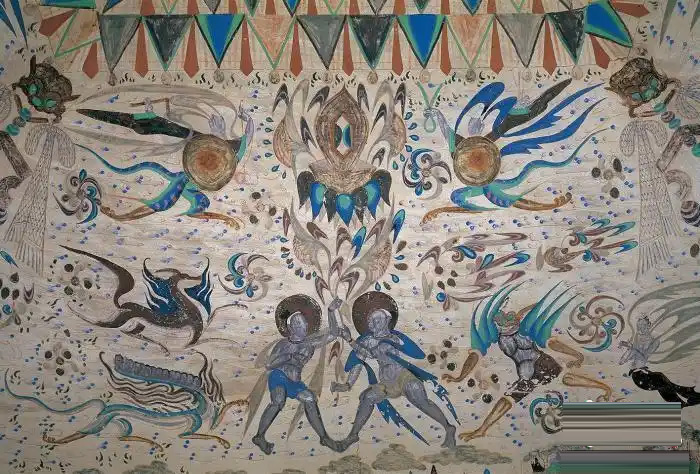 The image of Fuxi and Nuwa on the eastern slope ceiling of Cave 285 in the Mogao Grottoes. (Photo provided by the Dunhuang Academy)
The image of Fuxi and Nuwa on the eastern slope ceiling of Cave 285 in the Mogao Grottoes. (Photo provided by the Dunhuang Academy)
China News Service Reporter: How will the Dunhuang Academy continue to tell the stories of the zodiac animals in the murals to domestic and international audiences?
Zhang Xiaogang: The zodiac culture in China has a history of thousands of years and is closely connected to people's lives. It not only guides daily behavior but also serves as an identifier of personal identity and character. With the successful inscription of the Spring Festival as a UNESCO Intangible Cultural Heritage, the zodiac culture, as a part of traditional Chinese culture, has become one of the topics for telling Chinese stories. Regarding the zodiac animals in the murals, we have initially sorted and produced some animated videos. In the future, we will strengthen the digital zodiac series by creating lively and interesting animated videos based on the zodiac animals in the Dunhuang Grottoes murals. We will also develop interactive games related to the zodiac theme to enhance visitors' fun and participation. Additionally, we plan to use VR and AR technologies to allow audiences to immerse themselves in the world of zodiac animals depicted in the murals.
In the future, we will also plan and hold exhibitions themed around "The Zodiac Animals in the Dunhuang Grottoes Murals" to help audiences gain a deeper understanding of zodiac culture and Dunhuang art. We will design a series of zodiac-themed cultural and creative products and conduct in-depth academic research to provide academic support for telling zodiac stories.
Related destinations
Why Choose Us?
We are the top Silk Road tour operator based in Dunhuang, China. We focus on providing well designed Silk Road China Tours with resonable price and thoughtful service.
- Easy & carefree booking
- The best value
- Great travel experience
- Locally operated
Hot Tours
-

6 days Gansu tour to Binglingsi, Xiahe and Langmusi
Tour type : Private tour Price : from *** Destinations : Lanzhou - linxia - Xiahe - Langmusi - Hezuo - Lanzhou -

12 Days Gansu Highlights Tour
Tour type : Private tour Price : from *** Destinations : Xian – Tianshui – Lanzhou – Xiahe – Langmusi – Hezuo – Zhangye – Jiayuguan - Dunhuang -
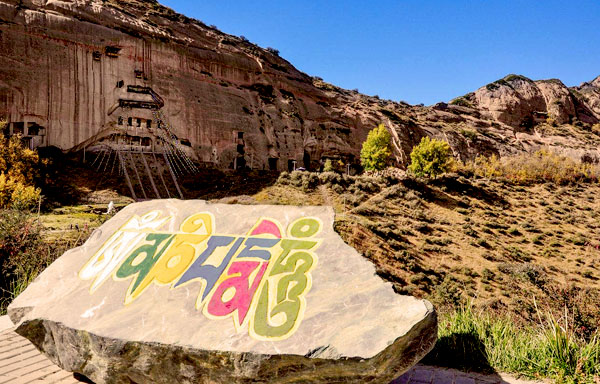
10 Days Silk Road Classic Tour
Tour type : Private tour Price : from *** Destinations : Xian - Zhangye - Jiayuguan - Dunhuang - Turpan - Urumqi -

5 Days Zhangye - Alxa youqi Highlights Tour
Tour type : Private Tour Price : from *** Destinations : Zhangye - Alax youqi - Zhangye

